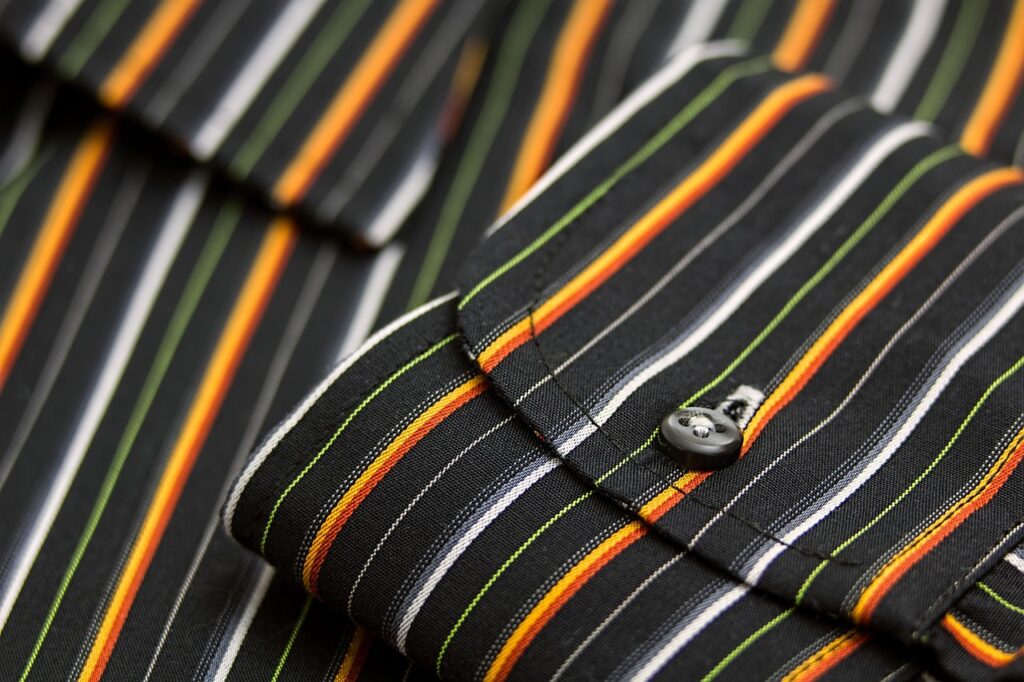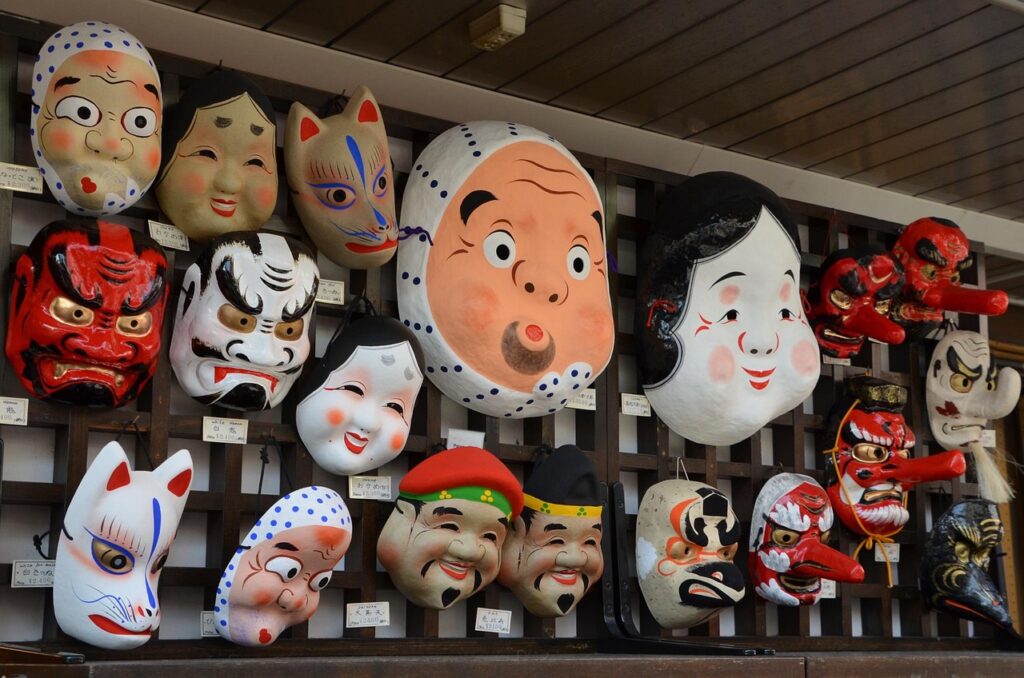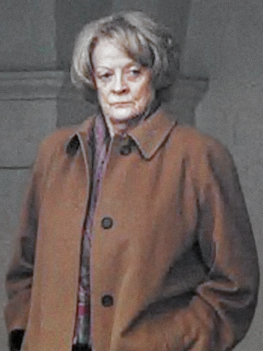
Get ready to dive deep into the extraordinary world of a true fashion titan! We’re talking about Giorgio Armani, a name synonymous with understated luxury, revolutionary design, and an empire that stretched far beyond the runway. With his recent passing in 2025 at the age of 91, the world paused to reflect on a career that not only defined an era but also continuously pushed boundaries, reshaping how we think about style, power, and elegance.
Armani was more than just a designer; he was a visionary who, as The New York Times aptly put it, became “Fashion’s Master of the Power Suit.” His influence wasn’t confined to haute couture; it permeated pop culture, sports, hospitality, and even ethical debates within the industry. From humble beginnings in post-war Italy to building a global brand recognized across continents, his journey is a masterclass in relentless innovation and unwavering vision.
So, grab your virtual front-row seat as we explore the defining moments and incredible achievements that cemented Giorgio Armani’s place as one of the most influential designers in contemporary fashion. We’ve handpicked 12 key facets of his legendary life and career, showcasing why his legacy will continue to inspire for generations to come. Let’s peel back the layers and uncover the genius behind King Giorgio!

1. **From Modest Roots to Medical Aspirations (and a Pivotal Shift)**
Born on July 11, 1934, in Piacenza, Giorgio Armani’s early life was far from glamorous. He grew up during the tumultuous years of World War II, experiencing poverty and a severe burn incident from an unexploded artillery shell that also tragically claimed a close friend. These modest circumstances undoubtedly shaped his perspective and determination, instilling a sense of practicality that would later define his minimalist aesthetic.
His initial career path was surprisingly far removed from fashion. While attending secondary school in Milan, he dreamed of becoming a doctor, inspired by A. J. Cronin’s novel, *The Citadel*. He even enrolled in the department of medicine at the University of Milan, dedicating three years to his studies. However, fate had other plans.
In 1953, after three years, he left university to join the Italian Army. His medical background led to an assignment at the Military Hospital in Verona, where he found himself attending shows at the Arena. It was during this period that he began to reconsider his professional direction, realizing that a different career path awaited him. This crucial pivot marked the beginning of his eventual foray into the world of fashion, a decision that would change not only his life but the entire industry.

2. **Honing His Craft: The Early Career at La Rinascente and Nino Cerruti**
After two years of military service, in 1957, Armani officially began his professional journey in Milan, not as a designer but as a window dresser and sales clerk at the prestigious department store, La Rinascente. This hands-on experience was invaluable, placing him directly at the intersection of product and consumer. He was notably responsible for showcasing the innovative Finnish textiles of Marimekko, giving him an early taste of groundbreaking design.
Working in the menswear department, Armani gained crucial insights into the marketing aspect of the fashion industry, understanding what resonated with customers and how to present garments effectively. This practical knowledge would prove foundational when he later launched his own label. It wasn’t just about designing clothes; it was about understanding the entire ecosystem of fashion.
By the mid-1960s, his talent was recognized, leading him to the Nino Cerruti company, where he designed menswear. This was a significant step, allowing him to apply his burgeoning design sensibilities. During the next decade, while still working for Cerruti, Armani also freelanced extensively, contributing designs to as many as ten manufacturers simultaneously. This intense period of diverse collaborations undoubtedly sharpened his skills and helped him develop the distinctive style that would eventually make him a household name.
3. **The Pivotal Partnership and Birth of an Empire: Founding Giorgio Armani S.p.A.**
Armani’s journey took another critical turn in the late 1960s when he met Sergio Galeotti, an architectural draftsman. This encounter blossomed into a deep personal and professional relationship that would prove instrumental in the creation of his brand. Galeotti was not just a partner; he was a confidante and a catalyst, encouraging Armani to embrace his full potential.
In 1973, Galeotti persuaded Armani to open a design office in Milan. This move facilitated a period of intensive freelance work for several fashion houses, including Allegri, Bagutta, Hilton, and Gibò. It was during this time that Armani’s unique vision began to crystalize, attracting international press attention after successful runway shows at the Sala Bianca in the Pitti Palace in Florence. The experience was a crucible, allowing him to truly develop and refine his distinctive style.
Feeling ready to commit his energy to his own vision, on July 24, 1975, Armani and Galeotti officially founded Giorgio Armani S.p.A. in Milan. This monumental step was quickly followed by the presentation of his first men’s ready-to-wear collection for Spring and Summer of 1976, and a women’s line for the same season. The foundation was laid for what would become a global fashion powerhouse, driven by a clear aesthetic and a shrewd business sense.
4. **The Revolutionary Silhouette: Redefining the Deconstructed Suit**
Giorgio Armani’s most iconic and enduring contribution to fashion history is arguably his revolutionary approach to tailoring: the deconstructed suit. He initially gained widespread recognition for his minimalist, unlined silhouettes, especially his jackets and suits, which were said to have redefined both masculine and feminine elegance in a contemporary form. This wasn’t just a design tweak; it was a paradigm shift that challenged conventional notions of formal wear.
What did this deconstruction entail? Armani innovatively softened the internal structure of traditional men’s suits, drawing inspiration from Neapolitan tailors. By simply removing heavy shoulder pads and rigid canvas linings, he created a garment that flowed with the body, offering an unprecedented level of comfort and an easy, almost louche sensuality. This new male uniform quickly became a sensation, perfectly capturing the spirit of the early 1980s.
The impact wasn’t limited to menswear. The feminized version of his suit quickly found immense favor among women, especially as they entered the professional workforce in greater numbers. Deborah Nadoolman Landis, a costume designer and historian, noted that Armani provided the perfect solution for women transitioning from the casual styles of the 1960s to a more professional look. His designs offered an alternative form of power dressing – androgynous, luxurious, and perfectly poised between stuffy corporate attire and prim skirt suits. As Harold Koda, a former head curator of the Costume Institute at the Met, observed, Armani, much like Coco Chanel with her little black dress, was equally important for his social contributions through dress as for his specific designs.
5. **From Runway to Red Carpet: Conquering Hollywood and Celebrity Style**
Armani’s keen understanding of the power of image extended beyond the fashion show. He played a pivotal role in shaping celebrity style, particularly red-carpet fashion, making his name almost synonymous with it. He viewed a relationship with the film industry as essential, both for promotional reasons and as a source of creative stimulus, calling cinema his “true love” and admitting, “I would like to have been a director.”
His breakthrough into Hollywood came in 1980, with his involvement in the costume-making for the film *American Gigolo*. He specifically designed the wardrobe for actor Richard Gere, who played the main character, Julian Kaye. A memorable scene featured Gere yanking open a drawer of perfectly folded Armani shirts, labels exposed, before assembling four entirely Armani outfits. This cinematic exposure catapulted Armani’s name and brand to a much broader international audience, showcasing his sophisticated aesthetic to millions.
This was just the beginning. Armani went on to design costumes for more than one hundred films, further cementing his international reputation. Another highly significant project was *The Untouchables* in 1987, which continued to highlight his talent for crafting powerful and stylish cinematic wardrobes. By aligning himself early and effectively with movie stars and their glamorous world, Armani institutionalized the symbiosis of celebrity and fashion, creating a blueprint for how designers and Hollywood would interact for decades to come, ensuring his designs were not just seen, but *desired* on the world stage.
Read more about: Beyond the Red Carpet: These Mega-Stars Mastered Multiple Languages, And You’ll Be Seriously Impressed
6. **Building an Empire: Global Brand Expansion and Strategic Diversification**
Giorgio Armani was not just a designer; he was an instinctive empire builder. Following the founding of his namesake company, he swiftly began an aggressive strategy of global expansion and brand diversification. In 1979, he established the Giorgio Armani Corporation, specifically targeting the United States market, quickly making the label one of the leading names in international fashion.
He systematically introduced several new product lines to cater to different segments and needs. These included G. A. Le Collezioni, Giorgio Armani Underwear and Swimwear, and Giorgio Armani Accessories. Recognizing the lucrative potential beyond clothing, the early 1980s saw the company sign a landmark agreement with L’Oréal to create perfumes and cosmetics under the Armani Beauty brand, further extending his reach into the luxury lifestyle market.
Armani also understood the importance of appealing to a younger, more accessible market without compromising on stylistic quality. This led to the introduction of popular diffusion lines like Armani Junior, Armani Jeans, and Emporio Armani, followed by Emporio Underwear, Swimwear, and Accessories in 1982. New stores were strategically opened for the Emporio line, alongside the first Giorgio Armani boutique, democratizing his sophisticated aesthetic. His vision for wider accessibility culminated in the late 1980s and early 1990s with A/X Armani Exchange, a line focused on casual, everyday clothing like T-shirts for younger consumers and the American mass market, marking a deliberate move to break into new demographics and truly globalize his fashion message. He also prepared to break into the Chinese market, opening his first store in 1998, followed by a flagship in Shanghai in 2004, with plans for 40 by 2011, demonstrating his forward-thinking approach to global reach.” , “_words_section1”: “1940
Read more about: Behind the Drone Curtain: Unpacking Russia’s Ambitious Drive to Dominate Unmanned Warfare
7. **Championing Ethical Fashion: A Vision Beyond Aesthetics**
Beyond his groundbreaking designs, Giorgio Armani was a fervent advocate for ethical practices within the fashion industry, demonstrating a profound commitment that often set him apart. He understood that true style extended beyond the garment itself, encompassing the well-being of those who created it and the broader impact on society. This foresight was evident in his willingness to challenge industry norms and promote more responsible practices, long before they became mainstream conversations.
One of Armani’s most impactful moves in this arena came in 2007 when he became the first designer to ban models with a body mass index (BMI) under 18 from his runways. This bold decision was a direct response to the tragic death of Ana Carolina Reston, a model who had reportedly starved herself due to anorexia nervosa. Armani’s stance sent a powerful message, emphasizing health over an unrealistic ideal of thinness and sparking a crucial global discussion about body image in fashion, urging others to follow suit.
His dedication to sustainability was equally noteworthy. In 2011, Armani became the first luxury designer to embrace Livia Giuggioli Firth’s Green Carpet Challenge. This initiative championed sustainable fashion, encouraging designers to create garments from recycled plastics and fabrics. For the challenge, Armani crafted a stunning dress for Giuggioli Firth and a sleek tuxedo for her then-husband, actor Colin Firth, showcasing that eco-conscious fashion could be both glamorous and high-end. It was a clear demonstration that luxury and responsibility could, and should, coexist harmoniously.
Read more about: Gen Z Speaks Out: Enough is Enough with Sexist Fashion
8. **From Runways to Retreats: Pioneering Luxury Hospitality**
Giorgio Armani’s expansive vision wasn’t confined to clothing, cosmetics, or even his various diffusion lines. He recognized the burgeoning potential of extending his brand’s distinctive aesthetic into the realm of luxury lifestyle experiences, ultimately venturing into high-end hospitality. This move allowed his followers to not just wear his designs but to inhabit spaces imbued with his signature elegance and minimalist philosophy, creating a truly immersive brand experience.
In 2005, a significant long-term licensing agreement was struck with Emaar Properties PJSC, a move that laid the groundwork for the development of a global collection of luxury hotels and resorts under the prestigious Armani name. This partnership was a strategic masterstroke: while Emaar would handle the intricate details of construction, management, and daily operations, Armani himself retained absolute creative control. This ensured that every aspect of the interior design, furnishings, and overall style would perfectly reflect his unique artistic vision, maintaining the brand’s impeccable standards.
The culmination of this ambitious venture arrived on April 27, 2010, with the grand opening of the Armani Hotel in the iconic Burj Khalifa in Dubai, United Arab Emirates. Occupying the bottom 39 floors of the supertall skyscraper, the hotel boasted 160 exquisitely designed guest rooms and suites, alongside 144 exclusive residences. Armani’s creative influence permeated every corner, extending to the interiors of the Armani Residences within the same skyscraper and even a specially designed line of products from his luxurious Armani/Casa home furnishings collection, offering a complete lifestyle package for the discerning traveler.
9. **A Connoisseur of Culture: Music, Art, and the Performing Arts**
Armani’s empire was never solely about fabric and stitches; it was deeply intertwined with culture, art, and the performing arts, reflecting his personal passions and broad interests. His engagement with these fields added another dimension to his brand, showcasing a refined taste that resonated with a sophisticated global audience. He recognized the power of different mediums to communicate his aesthetic and vision, expanding his influence far beyond traditional fashion circles.
His venture into music, Armani Musica, is a testament to this, presenting the popular Emporio Armani Caffè compilations. These special CD series, meticulously curated by Armani himself alongside DJ-sound designer Matteo Ceccarini, offered an eclectic mix of conceptual sounds and underground rhythms. This initiative allowed customers to experience the brand’s mood and atmosphere audibly, providing a unique sensory connection to the Armani lifestyle and enriching their overall experience of the brand.
Armani’s commitment to the arts was also evident through his support of various cultural initiatives. In 1990, he supported the MoMA exhibition *Pier Paolo Pasolini: The Eyes of a Poet*, even donating a copy of Pasolini’s 1961 film *Accattone*. Later, in 2015, he participated in the Paris Photography Public Programme as an official partner, with his ACQUA #6 project showcasing works focused on the theme of water in photography. These contributions underscored his role as a patron of the arts and a cultural influencer, making the brand synonymous with artistic appreciation.
The designer also showcased his artistry through exquisite fine jewelry. In 2019, he introduced his first fine jewelry collection during Haute Couture Week in Paris, featuring the stunning 2022 “Josephine” collection. Inspired by Joséphine de Beauharnais, this collection beautifully incorporated paisley motifs with chalcedony and grey diamonds, demonstrating his meticulous attention to detail and sophisticated design sensibility. These dazzling pieces have since adorned celebrities like Sophia Loren, Brie Larson, and Brooke Shields at numerous high-profile events, further cementing his brand’s association with ultimate luxury and red-carpet glamour.
Armani’s creative flair extended to the stage, where he designed many iconic outfits for pop superstar Lady Gaga, including those for her record-breaking Monster Ball Tour and Born This Way Ball Tour. His designs also graced many high-profile award shows, such as the 52nd Grammy Awards and the 2010 MTV Video Music Awards, ensuring his aesthetic was visible on the most watched cultural platforms. This fusion of fashion with music and performance highlighted his versatility and continued cultural relevance.

10. **A Man of Sport: From Courtside to the Finish Line**
Giorgio Armani harbored a profound and active interest in the world of sports, seeing it as another powerful arena for expression, discipline, and style. His engagement with athletics wasn’t merely superficial; it was deeply personal, reflecting a keen appreciation for athleticism and competition. This passion manifested in various forms, from team ownership to designing iconic uniforms for some of the world’s most renowned sports figures and franchises, solidifying his brand’s presence in yet another global sphere.
He was a devoted supporter and, notably, the president of the Olimpia Milano basketball team, a role that saw him actively involved in the club’s successes. Under his watch, the team achieved remarkable feats, securing six Serie A titles, four Coppa Italia wins, and four Supercoppa Italiana championships, along with reaching the 2021 EuroLeague Final Four. His dedication to Olimpia Milano was so strong that he even expressed a preference for basketball over football, stating that it united the city of Milan, despite being an Inter Milan fan himself, and also supporting AC Milan.
Armani’s sartorial influence also extended to the football pitch. He designed suits for the England national football team on two occasions, ensuring the squad looked impeccably sharp off the field. Subsequently, his designs were commissioned for the players of the prestigious London club Chelsea, dressing them since August 2007. This partnership further integrated his brand into the elite world of professional sports, showcasing his ability to blend high fashion with athletic professionalism, and even led to him commissioning a new look for Chelsea’s Directors’ Suite at Stamford Bridge.
His patriotic spirit shone brightly through his contributions to his home country’s Olympic efforts. Armani designed the Italian flag bearers’ outfits for the opening ceremony of the 2006 Winter Olympics in Turin, a moment of national pride. He continued this tradition by designing Italy’s Olympic uniforms for the 2012 Summer Olympics in London, ensuring that Italian athletes represented their nation with undeniable style and elegance. This direct involvement with national teams further highlighted his iconic status.
Furthermore, Armani ventured into creating a dedicated sports fashion line, the EA7 range. This innovative brand was directly inspired by the Ukrainian footballer Andriy Shevchenko, who famously wore the number 7 jersey while playing for AC Milan. The EA7 line offered stylish yet functional athletic wear, perfectly bridging the gap between high fashion and active lifestyles. This strategic move resonated with a younger, sports-conscious demographic, expanding the brand’s reach even further into everyday wear.
Continuing his powerful collaborations within the sports world, Armani entered a multi-year sponsorship agreement in 2021 as an official supplier to Scuderia Ferrari. This prestigious partnership saw Armani providing official and travel ensembles to members of the iconic Formula 1 team, gaining unparalleled brand exposure and association with the world’s number-one brand in motorsport. His influence reached its apex with his last sport partnership design, creating uniforms for Juventus, firmly embedding his legacy across Italy’s most beloved sports.
11. **The Intensely Private Man: Love, Loss, and Enduring Partnerships**
Despite his colossal public persona and global recognition, Giorgio Armani was, at heart, an intensely private man. He guarded his personal life closely, a characteristic that added an air of mystique to his larger-than-life image. However, in a rare moment of candor, he revealed in an interview with Vanity Fair that he had relationships with both men and women, offering a glimpse into the complexities of his emotional world.
The most profound personal and professional relationship of his life was with Sergio Galeotti, an architectural draftsman he met in the late 1960s. Galeotti was not only his business partner, instrumental in persuading Armani to open his design office and co-founding Giorgio Armani S.p.A., but also his long-term personal confidant and love. Their partnership was the bedrock upon which the Armani empire was built, with Armani crediting Galeotti for empowering him to pursue his true business vision and encouraging him to commit to his own label.
Galeotti’s untimely death in 1985 from complications of AIDS was a devastating blow to Armani, one that he openly described as the greatest failure of his career – his inability to prevent it. Even decades later, the grief and profound impact of this loss remained palpable. Reflecting in 2015, Armani shared, “when I travel, I bring his photograph. There is something that remains. His spirit lingers. For sure. He lives on. I see Sergio everywhere, and I am sure he sees me. And I have hope that whatever I have done, he knows about it.” This poignant statement underscores the enduring influence Galeotti had on his life and work, a testament to a bond that transcended mere business.
Armani’s immediate family included his late elder brother Sergio, his younger sister Rosanna – whom he credited with introducing him to the fashion industry – and three younger relatives: nieces Silvana and Roberta Armani, and nephew Andrea Camerana. At the time of his death, all his surviving family members were closely involved in his business empire, suggesting a continuation of his legacy within the family. Despite his private nature, his love for sailing and spending time on his yacht was also well-known, offering a serene escape from the demands of his empire.
While open about his sexuality, Armani’s views on public expressions of homosexuality sometimes sparked controversy. In a 2015 interview with The Sunday Times, he made a notable statement: “A homosexual man is 100% a man. He doesn’t need to dress like a homosexual.” These remarks reflected his belief in individuality and natural elegance, even as they sparked debate, highlighting his often outspoken and uncompromising views on personal style and identity.
Read more about: Maurice Tempelsman: Diamond Magnate, Political Powerhouse, and Jackie Onassis’s Enduring Companion
12. **A Legacy Etched in Eternity: The Enduring Impact of King Giorgio**
Giorgio Armani’s passing on September 4, 2025, at the age of 91 from liver failure at his Milan home, marked the end of an era, but certainly not the end of his profound influence. His death, preceded by a noticeable absence from Milan Fashion Week in June 2025, provoked a wide international reaction among political and cultural figures, underscoring his colossal global standing and the deep respect he commanded across various sectors. The world mourned the loss of a true visionary.
Tributes poured in from across the globe. Italian Prime Minister Giorgia Meloni hailed Armani as a “symbol of the best of Italy,” capturing the essence of his contribution to national pride and global recognition. French businessman Bernard Arnault lauded Armani for crafting a “unique style” of fashion and for propelling “Italian elegance to a global scale,” acknowledging his unparalleled impact on international luxury. These sentiments reflected the consensus that Armani was not just a designer but a national treasure and a global icon.
Media outlets universally acclaimed his revolutionary impact. The BBC declared that Armani “revolutionised fashion” and asserted that no fashion designer had made as “lasting change in the way people dress” since Coco Chanel, placing him in the pantheon of fashion’s all-time greats. *Le Monde* further solidified his standing, calling Armani “one of the last great makers of modern fashion,” highlighting his enduring relevance and mastery in an ever-evolving industry.
Armani was particularly noted for loosening the restrictions of stiffer suit wear, making men feel sophisticated and empowering women in formal professional settings. *The New York Times* famously labeled him “Fashion’s Master of the Power Suit,” also citing his indelible impact on celebrity fashion and “red-carpet dressing,” cementing his reputation as the go-to designer for Hollywood’s elite. His work was frequently seen as art rather than solely fashion, exemplified by the Guggenheim Museum in New York hosting an exhibition of his work in 2000—a first for a living designer—which drew an astounding average attendance of 29,000 visitors a week, a true testament to his artistic prowess.
Throughout his illustrious career, Armani received numerous honors and awards, solidifying his place in fashion history. These accolades included the prestigious Neiman Marcus Award for Distinguished Service in the Field of Fashion in 1979, being honored by the Council of Fashion Designers of America (CFDA) as best international designer in 1983, and receiving a Lifetime Achievement Award for menswear from the CFDA in 1987. International recognition followed, with the Officer of the Legion of Honour from France in 2008 and the Knight Grand Cross of the Order of Merit of the Italian Republic in 2021, Italy’s highest civilian honor, acknowledging his profound and lasting contributions to both fashion and culture. *Vogue* acclaimed him as the “most successful designer of Italian origin” in 2001, while *Time* stated he “forever changed the way people think about clothes,” a rare achievement for any designer.
His legacy also included careful planning for the future of his empire. On September 12, his two final wills were released, detailing instructions for his heirs to sell an initial 15% minority stake in his businesses. Intriguingly, priority for this stake was given to major luxury conglomerates like LVMH, EssilorLuxottica, or L’Oréal, indicating his strategic foresight and ensuring the continued strength and influence of the Armani brand for generations to come. Giorgio Armani wasn’t just a designer; he was an architect of modern style, a cultural ambassador, and an empire builder whose vision will undoubtedly continue to inspire and shape the world of fashion and luxury for many years to come.












